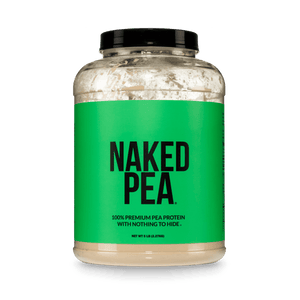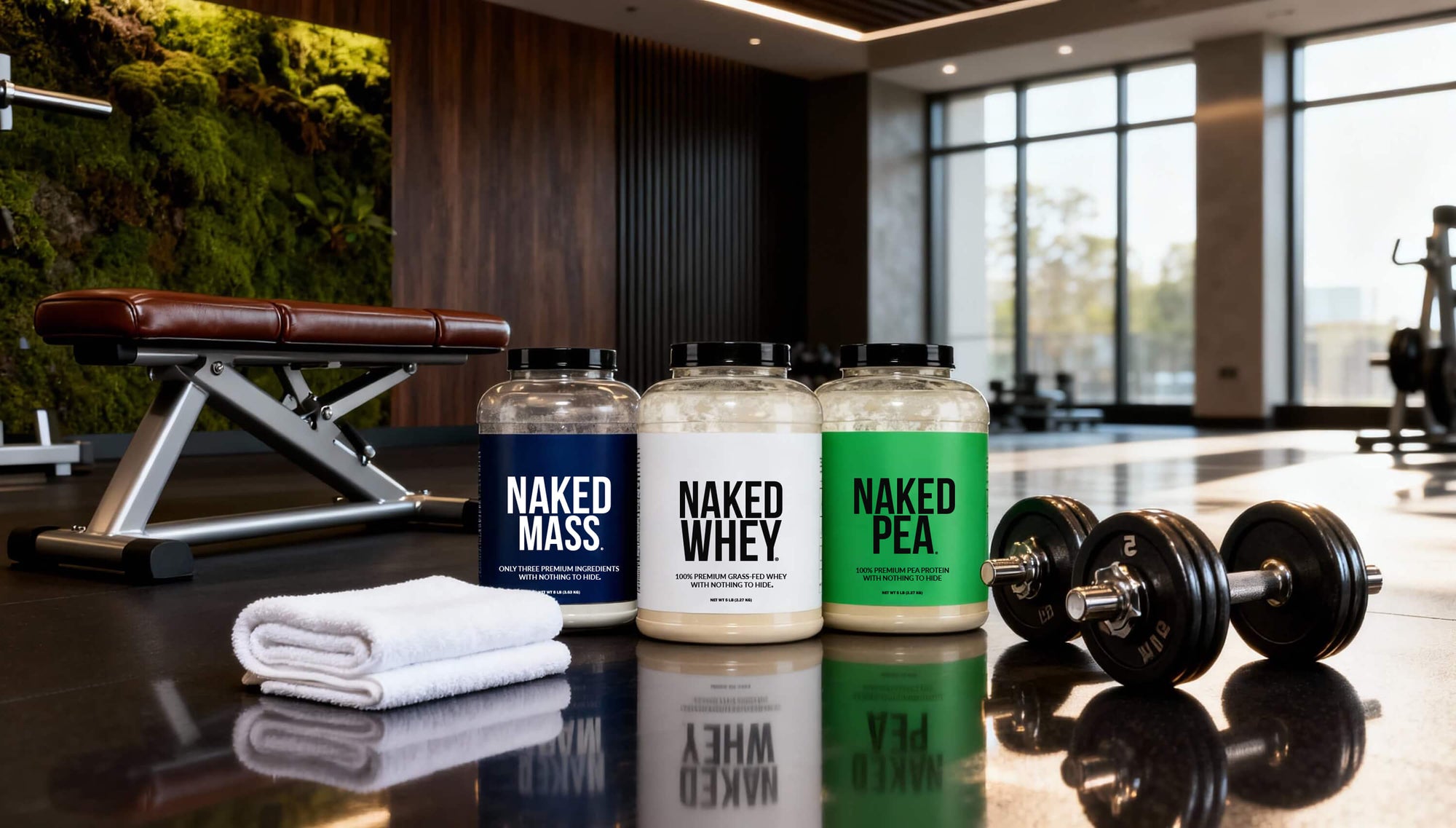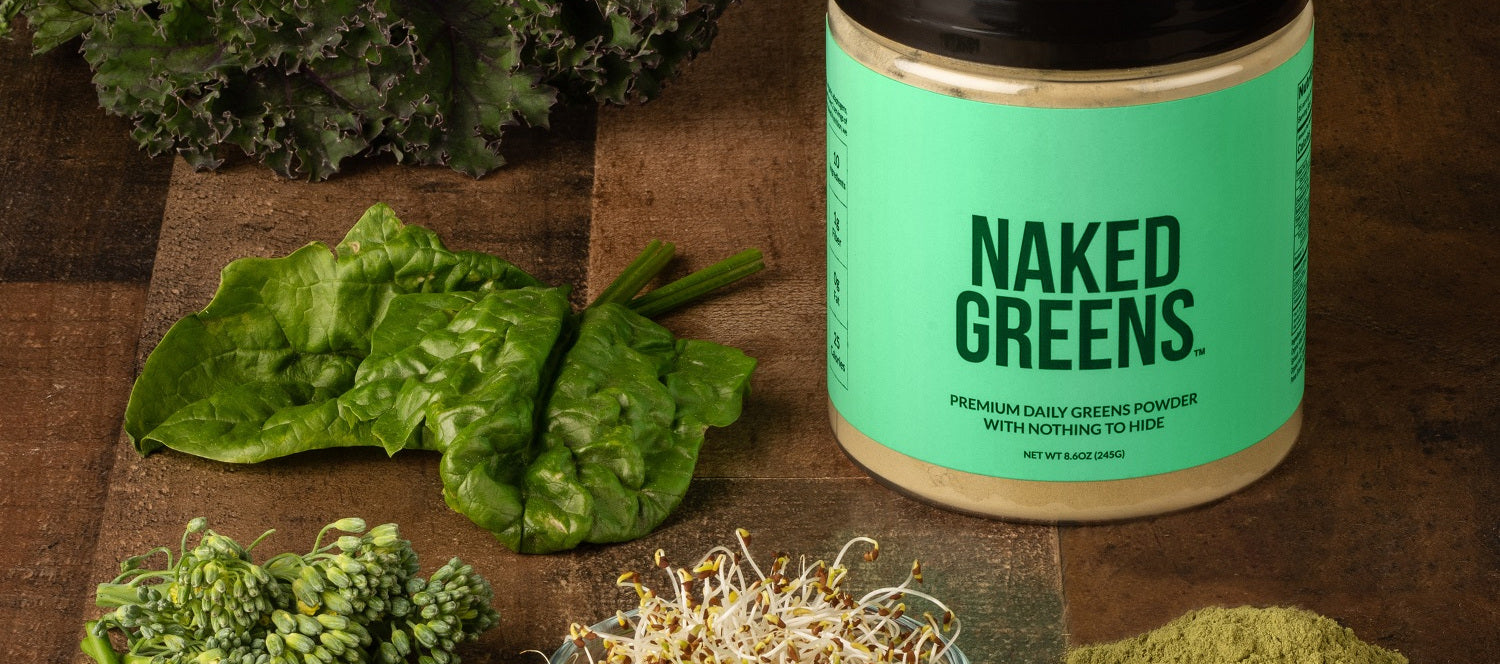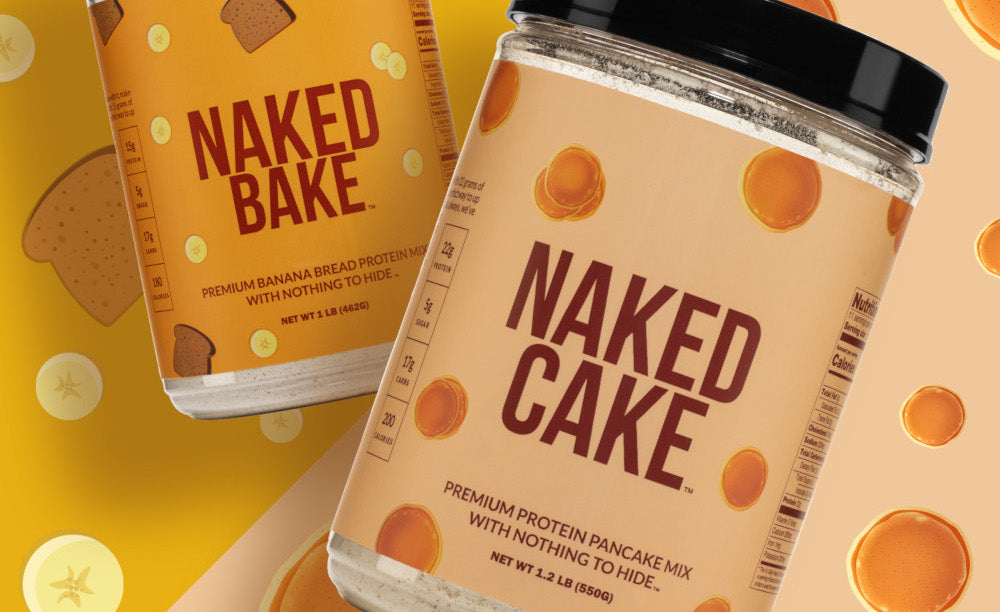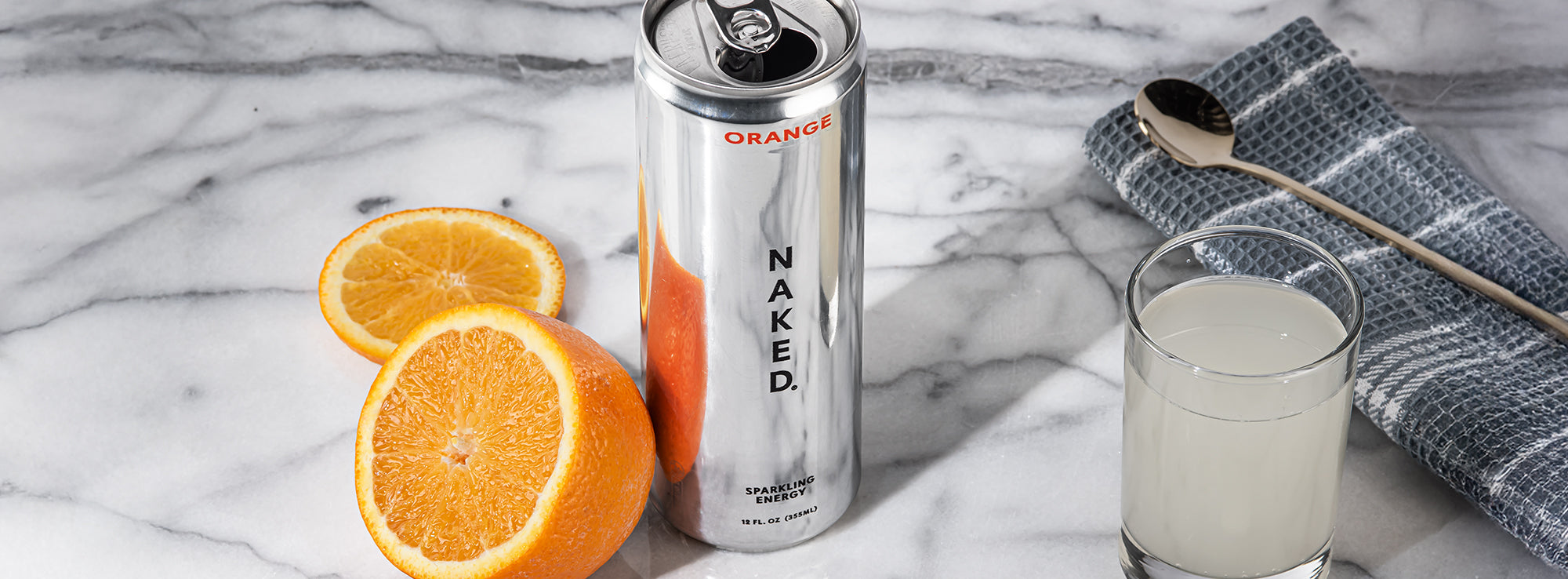Maybe you’re new to using protein powder and seeking for the best option for your lifestyle. Or, maybe you’re a protein-veteran looking to switch things up.
In this article, we’ll unpack the differences between two of the most popular protein bases: pea protein and whey protein. Each has its benefits - but which one better aligns with your health and fitness goals?
What is Whey Protein?
Whey protein is a widely-used protein powder because of its complete amino acid profile, mild taste, and consistent results. Cow’s milk naturally contains two major types of protein: casein and whey. Whey is preferable to casein because whey is more readily digestible and provides greater sensations of fullness (1).
To make whey protein powder, the protein-rich liquid portion of milk is separated, purified, and powdered. Classic whey protein may contain small amounts of naturally-occurring lactose and fat with it, whereas “whey protein isolate” indicates that only the protein-portion is present.
What Is Pea Protein?
Compared to whey protein, pea protein is a new kid on the block. Pea protein has boomed in popularity in recent years as growing numbers of people are choosing plant-based alternatives to reduce dairy consumption for health or environmental reasons (2) .
Pea protein is made by isolating the protein-rich component from yellow peas. “Pea protein isolate” typically contains just protein, not the carbohydrates or fiber that you’d also typically find in peas.
What Are the Differences between Pea and Whey Protein?

Now that we’ve introduced our two proteins in question, let’s see how they differ in every category, ranging from nutritional value to health benefits to environmental impact.
Ready for the Full Rundown?
Nutritional Value
When it comes to protein content, whey and pea protein powders are comparable. For example, our pea protein offers 27 grams per serving and our whey protein contains 25 grams per serving. Both of these dosages are enough to meet your fueling needs, as it’s widely considered that taking in more than 30 grams of protein in one sitting has diminishing returns.
Depending on which brand and product you choose, you might see small amounts of other macronutrients in your protein powder. For example, both pea and whey products may have 2 to 3 grams of carbohydrates and fats per serving.
When it comes to micronutrients (vitamins and minerals), whey and pea proteins differ. Whey protein is a good source of iron and calcium (which means one serving meets at least 10% of your recommended daily requirements). Whey protein also offers phosphorus and magnesium.
Pea protein contains calcium, phosphorus, and magnesium in comparable amounts to whey protein. The key difference is that pea protein offers a significantly higher dose of iron - 42% of your RDA, compared to 11% in whey protein.
Amino Acids
If you’ve nerded out on nutrition before, you know that it’s important to look beyond simply macronutrients and micronutrients. For example, amino acids are key in any discussion of dietary or supplemental protein.
Twenty amino acids serve as the building blocks for making proteins in the body, and 9 of these amino acids are considered “essential” because our bodies cannot make them on their own. We therefore need these 9 amino acids from our diet, supplements, or both.
Overall, animal-based proteins (like whey) have consistently been found to have better amino acid profiles than plant-based proteins (3). Whey protein contains all 9 essential amino acids at ideal levels.
While pea protein does technically contain all 9 essential amino acids, it has low levels of the amino acid called methionine. From an amino acid standpoint, that makes pea protein inferior to whey protein. With that said, you can add methionine to your diet through a range of other foods throughout the day. Eggs and meat have the highest methionine levels, but if you’re vegetarian or vegan, you can also find methionine in most seeds and grains like oats, brown rice, and rye (though in lesser amounts than in animal products) (4).
Digestion & Bioavailability
“Bioavailability” describes how well our bodies can digest, absorb, and use nutrients from a food. Overall, animal-based proteins (like whey) are slightly more bioavailable than plant-based proteins (like pea) (5). There are a number of factors that explain this, including plant proteins’ structural shape and the fact that they often go naturally hand-in-hand with compounds that reduce absorption, like phytic acid and tannins.

It’s important to keep in mind that the difference in bioavailability is minor. Plus, plant proteins become more digestible as they’re processed into powder thanks to heat and enzyme treatments. If you’re concerned about this difference, taking in a few extra grams of plant protein would correct it.
Health Benefits
Both pea and whey proteins offer the benefits that most proteins do: namely, supporting muscle maintenance and increasing satiety, which may in turn help with weight loss. But do each of these proteins have their own unique benefits?

Whey protein has uniquely been found to help lower high-blood pressure, thanks to naturally occurring compounds in dairy-based proteins called ACE-inhibitors (6, 7).
Whey protein has also proven superior to other proteins in studies at moderating blood sugar (8).
Pea protein can be a helpful supplement for boosting iron levels, thanks to its high content of this mineral. Iron intake is particularly important for women, who have higher iron requirements due to monthly menstrual blood loss as well as pregnancy.
You might also be at risk for iron-deficiency anemia if you donate blood frequently, have an autoimmune disease, or are recovering from infection, illness, or surgery (9).
Environmental Sustainability
If going “greener” is your top priority, then pea protein is your best bet. Studies have shown that when consumers shift towards plant-based products, their carbon footprint significantly decreases (10, 11).

However, there’s certainly a place in your diet for whey protein even if you’re concerned about the planet’s health. To reduce your carbon footprint, it’s more impactful to address your beef consumption than it is to focus on whey protein, since the latter requires fewer resources to produce.
Taste
Whey protein is widely accepted as having a mild, palatable taste. If you have a picky palate, whey is a safe place to start.
Pea protein has historically been described as having a grassy, bean-like off-flavor. However, processing techniques have significantly improved in recent years to make pea protein more tasty. If you tried pea protein a few years ago and didn’t like, try again – chances are, innovation is on your side!
Both pea and whey protein powders are available plain or with flavoring, depending on how you like to use them.
Does Pea Protein Help with Muscle Gain?
Pea protein has been proven to be just as effective for muscle gain as whey protein is. One study found that people who took pea protein isolate significantly increased muscle thickness compared to those who took whey protein or a placebo (12). Researchers in a systematic review found that plant proteins in general can increase muscle mass and strength just as effectively as animal proteins, albeit sometimes in slightly larger dosages (13).

Recipe: Antioxidant Raspberry Smoothie
Blend together until smooth:
- 1 cup cauliflower (frozen)
- 1 cup raspberries (frozen)
- 1 lemon (juiced)
- 2 scoops Vanilla Naked Whey*
- 1 Tbsp chia seeds
- 1 ½ cups (12 fl oz) milk
*or use 2 scoops Unflavored Naked Whey and add ½ tsp vanilla extract

Recipe: Chocolatey Plant-based Protein Smoothie
Blend together until smooth:
- ¼ avocado (frozen)
- ½ banana (frozen)
- 2 scoops Chocolate Naked Pea*
- 1 Tbsp cacao or cocoa powder
- 1 Tbsp peanut butter
*or use 2 scoops Unflavored Naked Pea and increase cocoa powder to 3 Tbsp
Is pea or whey right for me? (The Bottom Line)
Whey and pea protein can both help meet your protein needs to fuel your lifestyle and fitness goals - so how do you choose?
Both protein types are safe, mild-tasting, and have been proven to help people gain muscle mass and strength. Both types are a good source of calcium and offer a high amount of protein per serving.
The primary differences between them are that whey protein is superior when it comes to the essential amino acid profile and (slightly) bioavailability, while pea protein is more environmentally sustainable and higher in iron.


